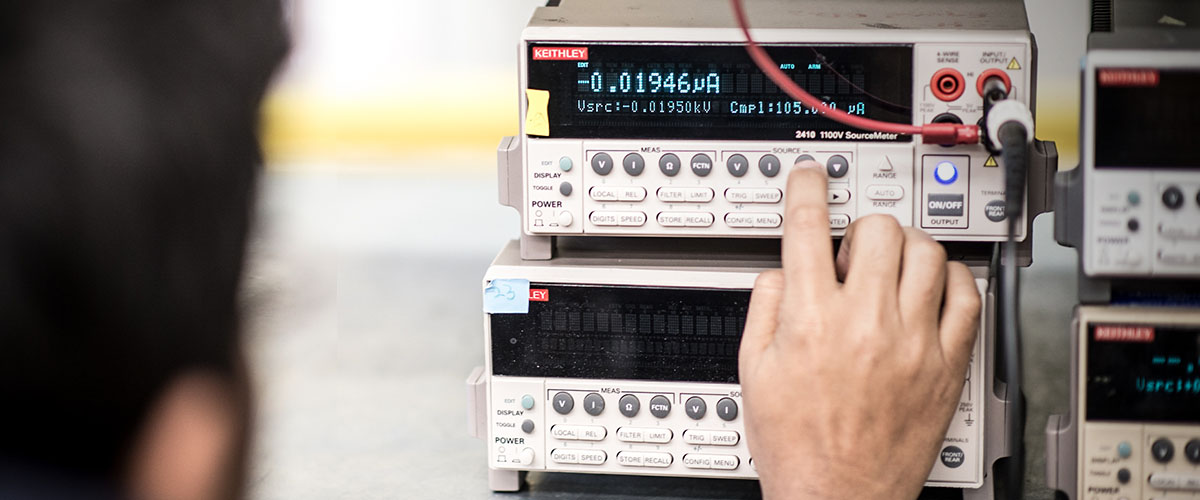
Below is a list of measurement techniques available at the DC Field Facility. For a list of all techniques available across all MagLab facilities, please go to our main Measurement Techniques page.
The DC Field Facility has the capability to measure low resistances samples in continuous fields up to 45 T. Most of the standard laboratory electroni…
AC magnetic susceptibility measures magnetic moment of a sample which is exposed to an oscillating external magnetic field.
A capacitive dilatometer measures a change of sample dimension by monitoring the capacitance between two parallel plates.
Dielectric capacitance measures capacitance and dissipation of a bulk or thin film sample.
The user can place small samples into an inductor (i.e., coil) of an LC tank circuit oscillating at a resonant frequency.
Electrical transport measurements can be carried out in temperatures as low as 20 mK and magnetic fields up to 45 T by either AC or DC methods.
EPR and ESR are two names of the same technique (EPR is preferred by the chemists and biologists while ESR is a favorite of physicists) which depends …
Specific heat of a material is a measure of heat necessary to raise the temperature of a given amount of material, typically a gram or a mol, by 1 Kel…
High currents measurements in the MagLab are used mainly for characterization/testing of superconducting materials.
Various pressure cells have been developed to address user needs, including large volume piston-cylinder cells with a maximum working pressure of 2.5 …
Bruker FTIR spectrometers are coupled to SCM3 and resistive magnet in cell 8.
The lab boasts a Condensed Matter NMR Group dedicated to NMR research at the highest possible fields over a wide temperature range.
Wideband microwave measurement capacity to 40 GHz.
In the pulse-echo ultrasonic technique, an ultrasound wave is excited and detected by two identical piezoelectric transducers (transmitter and receive…
In a Raman scattering experiment, a specimen is shined with laser light of a known frequency (energy) and polarization, and the scattered light is col…
The use of mechanical resonances to determine the elastic moduli of materials of interest to condensed matter physicists, engineers and materials scie…
The contactless Surface Acoustic Wave (SAW) technique is implemented to probe the high-frequency conductivity in low dimensional (2D) structures, by m…
A torque magnetometer is one of the most sensitive magnetic property measurement devices.
This technique utilizes a streak camera in order to measure photoluminescence lifetimes with a minimum duration of 2 ps.
The Magneto-optical Kerr probe provides the laboratory with a unique apparatus to measure properties of ultra-thin magnetic films and multilayers at h…
A vibrating sample magnetometer (VSM) is used to measure DC magnetic susceptibility and DC magnetization. The VSM utilizes the Faraday’s Law to measur…
The X-ray alignment is sample preparation technique that is done prior to putting single crystals into the magnets.
An X-ray diffraction instrument is available at the 25 Tesla Florida Split Coil Magnet at the NHMFL and allows studying magnetostructural transformati…